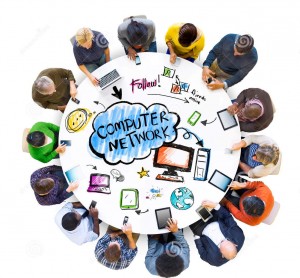Are All Networks The Same?
In today’s technologically driven world, many people are focused on using web-based relationships as the new way of increasing their success. More specifically, owners of businesses are interested in converting their web-based relationships with consumers and their cultivated consumer networks into realizable web traffic, marketable brand awareness, and sales dollars. But, in what many call the most socially connected period of time, are web-based relationships and networks as strong as many would like to think?
There have been many studies and articles in recent years about the effectiveness of technology-based relationships when compared to real in-person relationships. One of the generally shared conclusions is that most businesses are able to get the most out of relationships when they have in person relationships and meetings with their clients. One Wall Street Journal article cites a consultant who found that he was able to close more deals and convert more relationships into actual dollars when he was able to shake hands with his potential clients (Mullich, 2009). In a Forbes publication that surveyed CEOs of various companies, the CEOs all cited in-person meetings as being more effective than technologically based meetings and relationships (Forbes,2009). Both of these sources would suggest another bigger issue, which is that technology based relationships are not as strong as in-person relationships.
In class, we learned about strong edges and relationships between nodes or people in the context of building new relationships. One way that businesses can hope to use the relationships that they build with their consumers is to utilize some of the properties of triadic closure. They can use the strong relationships they have with their consumers to expand their customer base to the people that share strong edges with their current consumers. Then, these businesses can use their new relationships to expand their brand and increase their sales. But, in light of the reports about in-person and web-based relationships, can businesses mainly look to web-based interactions to create strong future sales? These articles suggest that while technology should be used to supplement in-person interactions, in-person interactions overwhelming produce stronger edges and, therefore, result in higher sales.
Sources:
Mullich, Joe. “The New Face of Face-to-Face Meetings.” Wall Street Journal. N.p., 2009. Web. 9 Sept. 2015. <http://online.wsj.com/ad/article/globaltravel-face>.
Meetings, Business. “The Case for Face-to-Face.” Forbes Insights (n.d.): n. pag. Facilitate. Forbes, 2009. Web. 9 Sept. 2015. <http://www.facilitate.com/support/facilitator-toolkit/docs/Forbes-Insight-F2F.pdf>.
picture sources:
http://thumbs.dreamstime.com/z/people-using-digital-devices-computer-network-symbols-41260585.jpg
http://www.ptgear.co.uk/wp-content/uploads/2011/09/networking.png


